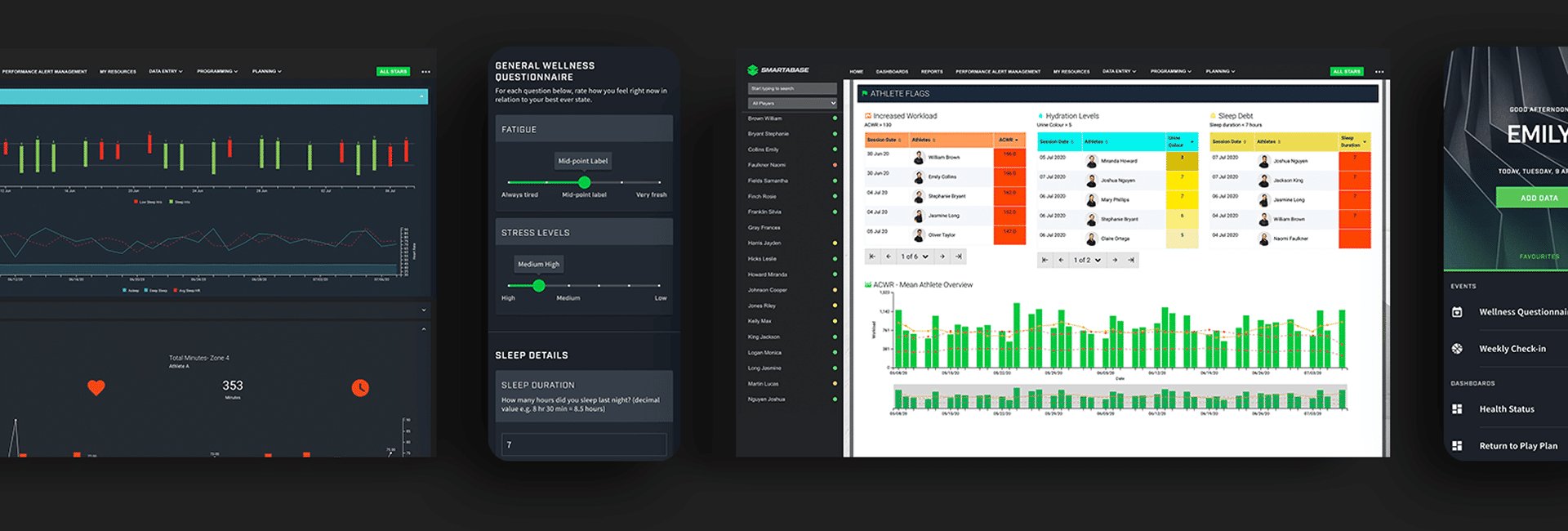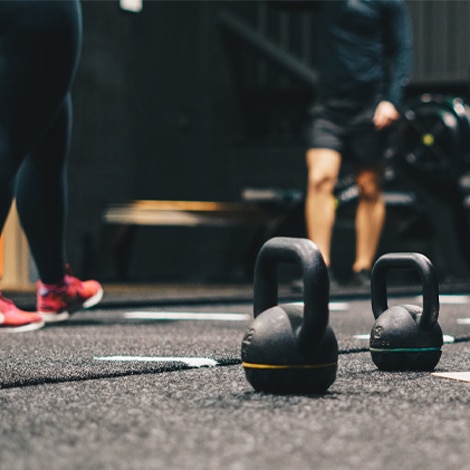By Alex Campanella
Collegiate sports in the US present unique challenges for human performance programs because there can be 20 varsity men’s and women’s teams and 500 to 1,000 student-athletes, each with distinct fitness considerations, competitive calendars, and goals.
As such, universities need a flexible Athlete Management System (AMS) that can suit their specific organizational and team structures, workflows, and requirements. Single sport-specific solutions are useful for pro teams but don’t offer the degree of flexibility required by sports scientists and the athletes and coaches they serve at the college level.
In this article, I’ll explain what a school should look for in an AMS and how to make sure it’s versatile enough to meet the diverse requirements of different sports coaches, athletes, and the performance staff that serves them.
SINGLE SPORT VS ATHLETIC DEPARTMENT-WIDE NEEDS
A team that plays a single sport has a high degree of specificity. Once a company customizes an AMS for one Premier League soccer team, they have a template that can easily be extrapolated to other clubs in the same division. This is also true for single sports at the amateur level.
But a university athletic department requires a higher level of customization and flexibility because of the sheer complexity and scope of its day-to-day operations. Even a smaller school won’t just have a soccer team, but also basketball, football, track, and many others. Depending on their location and climate, some schools have more specialist sports such as surfing or alpine skiing.
This creates a headache for sports scientists, physicians, athletic trainers, physical therapists, nutritionists, psychologists/counselors, strength and conditioning specialists, and other professionals whose mission it is to serve athletes and coaches across a wide variety of sports.
At NAIA, Division III, Division II, and even some smaller Division I colleges, there might be only a handful of these experts serving a disproportionally large student-athlete population. In which case, they will need even greater help from technology solutions such as an athlete management system (AMS), which can amplify the effectiveness of over-stretched performance staff and enable them to make the most of their limited resources and budgets.
SIMPLIFYING AND STREAMLINING COMMUNICATION
One of the biggest benefits of deploying an AMS in a university athletic department is that it can improve communication and data sharing across all stakeholders (departments, practice areas, athletes, coaches, etc.).
For example, let’s say that a player gets injured. The head coach might send them to see the athletic training team to get the sore ankle, knee, or shoulder assessed. The head athletic trainer decides the injury isn’t serious enough to exclude them from getting in the weight room later that day, but the exercises they perform need to be limited.
Traditionally, you might see the trainer run down the hallway to pass a note to this effect to the S+C staff before the player gets there. The problems with this include taking a medical professional away from their work, the potential to forget to pass on the instructions, a change in the athlete’s injury status before the strength session begins, and so on.
These issues go away when an AMS facilitates the transition from a manual, paper-based process to an automated, electronic workflow. Now as soon as the athletic training team enters their notes in Smartabase or a similar system, the strength and conditioning staff all get a notification that this player is injured. With one click, they can access the trainers’ notes on the individual and, if the AMS also acts as an Electronic Medical Record (EMR), they can view the players’ complete medical history.
This enables them to adjust the player’s programming on that particular day and until the training staff or team physician clears the athlete to return to full practice and competition. Such a switch also helps save time and effort on the back end of the process, as the S+C team no longer needs to physically pass on the notification about this individual’s injury status to the head and assistant coaches.

IDENTIFYING INTEGRATION POINTS AND THE IMPORTANCE OF VENDOR EXPERTISE
In addition to taking such interdepartmental communication into account, it’s also vital that a college selects a human performance platform that accommodates integrations with a wide variety of inputs, including sleep trackers, smartwatches, and GPS systems.
Simply collecting data from such systems is of limited value – it needs to be presented in a way that can be easily understood and acted upon. A system such as Smartabase already has proven integrations with many major wearables and other technology, and has experts on staff who can construct additional integration points if needed.
This brings up an important point for sports scientists: the best vendor is one that has an experienced consulting group that understands the needs of college sports. There are plenty of “off the shelf” options on the market that promise to fit to university athletic departments. But in actuality, some level of customization is always needed to accommodate the unique needs of each sport and the performance staff that serves them. So it’s important to take into account whether the AMS itself and the group that supports it is able to provide enough flexibility and insight.
DECIDING WHAT YOU’RE TRYING TO DO WITH AN AMS AND WHY
Before evaluating AMS options, the performance staff should work with all stakeholders (sport coaches, clinicians, domain experts, and the athletic department) to decide why it wants such a system and how it will be beneficial.
Generic aims like, “We want to reduce the number of injuries” can be a solid starting point, but it’s useful to drill down deeper. What kind of injuries are you having issues with? Let’s say that there seems to be an inordinate number of athletes getting sidelined with knee issues. Are these mainly ACL or meniscus tears? And what is already being done to try and establish a correlation between such injuries and training load, the impact of the competitive calendar, and recovery?
This is just one example of how asking questions, identifying goals, and outlining gaps between what’s being done well and what could be done better is beneficial. Doing so will help the sports science group evaluate why an AMS is needed, how it can help, and what it will be measuring.
The diverse needs of all the sports played on campus can then be assessed so when it comes time to talk to various AMS vendors, the performance team has a solid grasp on what they want and who is best positioned to become a good partner.








